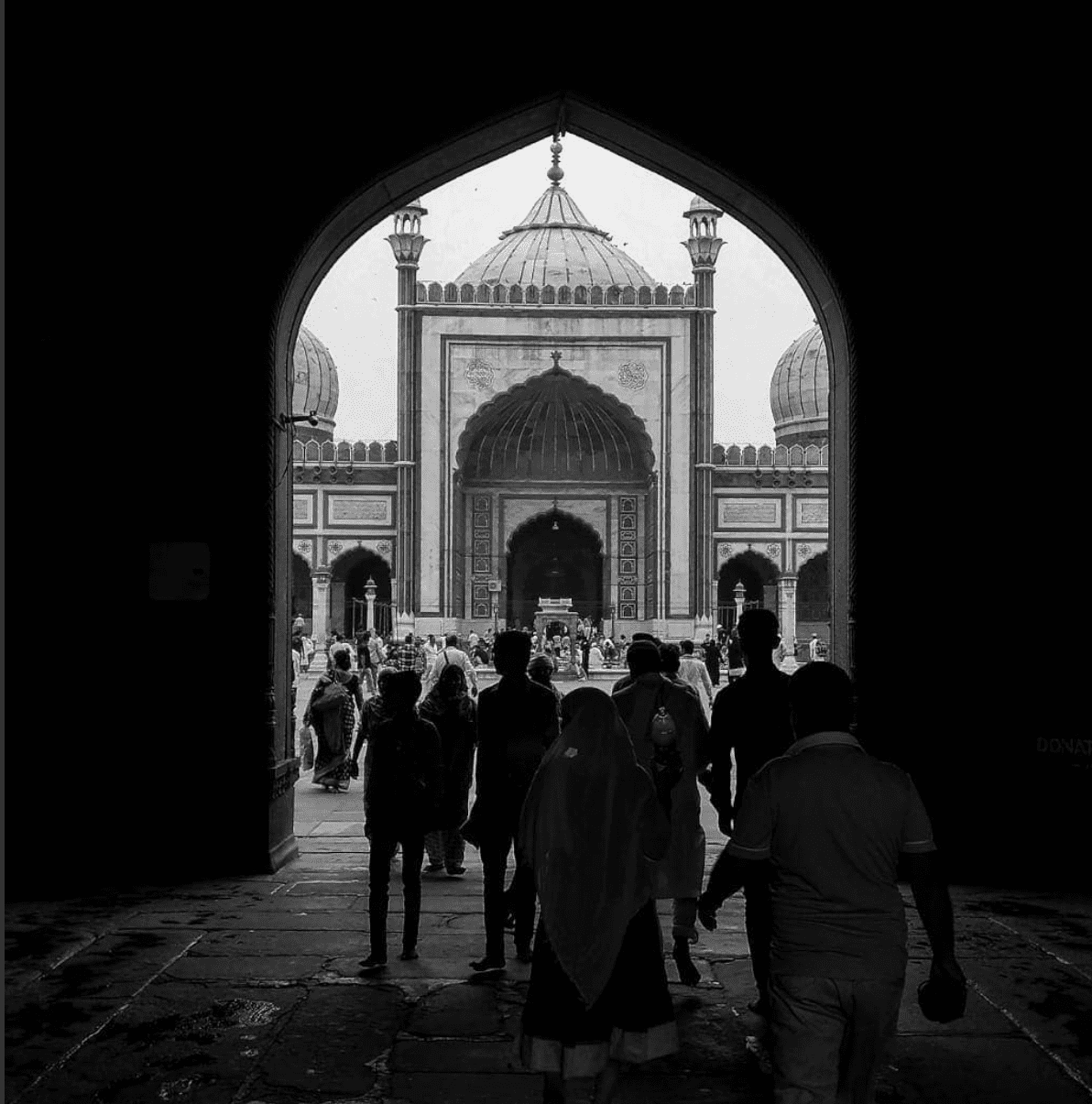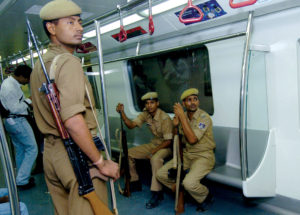Digitising the beauty of the city, these new age chroniclers are preserving and reidentifying the lost culture of the capital, through Instagram
“Ek roz apni rooh se pucha ke Dilli kya hai, to yu jawaab mein keh gayi, ye duniya maano jism hai aur Dilli uski jaan” -Mirza Ghalib (I once asked my soul what Delhi is, I received the answer that if the world is a human body, Delhi is its heart.)
Probably one of the most romanticised cities in the world, from its rich history to the scrumptious food, Delhi is not just occupied by people, it is a part of their hearts. The city has been the muse of many poets, including the likes of Mir Taqi Mir and Mirza Ghalib. If you ever randomly type in the name of the city in the Instagram search box, you will see several pages dedicated to the love of this city.
The Instagram ‘fan pages’ of Delhi have a high rate of engagement. These pages post food recommendations or things to do around Delhi. Some of them are more intellectual and focus on the history of the monuments here. They have different types of content, yet all of them share one common trait: they are in love with the city. There are several of such pages, yet no one tires of looking at lit up videos of the Qutub Minar or pictures of Connaught Place. With a capital city that has its own set of serious problems, Delhi sure never loses its charm.
These pages are more than just Instagram blogs though. They’re examples of what we consider modern art: social media content. How poets used to include their beloved city in their shayari and how historians wrote extensively about their favourite place; these people are doing the same through their blog: they’re keeping Delhi alive for the years to come. If you’ve seen any of these pages, you know what they do. They recreate the aura of places and make you fall in love with all it is. Most of these pages have a different reason for the kind of content they cover. While a lot of them simply post unoriginal content which gets them a lot of numbers but doesn’t have anything distinct about it, some of them really dive deep into the by-lanes of Delhi to come up with something intrinsically humanistic and fresh.
Anurag Srinivasan and Aliya Usmani run a blog on Instagram that goes by the name @dastaanedilli. Their posts consist of observations and writings about the seemingly regular and mundane bits of the city. When asked why they do what they do, they said, “Through this blog, we want to showcase a side of Delhi that is hitherto unknown and unseen. Delhi is a city that is frequently visited by hundreds of people but their exploration is often limited to the more well-known places. Through the limited audience that we are reaching through this blog, we want to tell stories of places and people who are buried behind the grandeur of this city. We have always felt that history is not just grand narratives, wars and monumental events but also micro-histories consisting of people, food, clothes and lived experiences.”
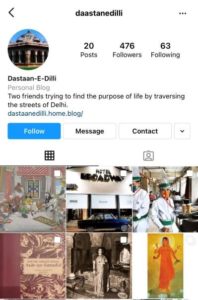
Speaking of history, a lot of these pages do talk about the rich and imposing past of the city. Keeping in mind Delhi’s love affair with several rulers and events through the years, the rough edges of this place have stood the test of time. While there are several books and articles present on the internet, some of these pages still write about the history of Delhi.
The founder of the page @itihassnama on Instagram, who prefers to call herself only by her initial N, writes about the history and culture of several cities in the South East Asian belt. Her work is credible because she is a research scholar specialising in the subject. She says, “The work I post today will definitely be an archive in the later years. Social media will be an authentic source. With so much misinformation going about in the mainstream media, there is an attempt at erasure of history. I am not particularly concerned about that because my mother tells me that no matter how much you hide it, the truth will reveal itself. Children will ask questions and the suppression will not go very far. My main purpose is love and peace. I try to propagate the coexistence of different cultures by writing about our shared history. I do receive a lot of hate. But I try to clean the dirt in people’s minds by explaining the realities to them gently and it works. There is a lot of wrong information on the internet which creates prejudices in the minds of people. Look at how Akbar is glorified and Aurangzeb is villainised. People need to know the truth and avoid propaganda.”
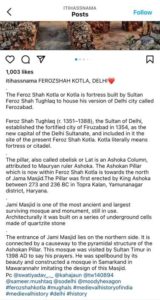
Thus, one of the aims of such pages is to create a digital archive and preserve history in some form. It makes sense, considering the setting of our country right now is straight out of an Orwellian novel, where the rulers want monopoly over the history textbooks. In such times, personal accounts become all the more important.
Abu Sufyan, who goes by the name @delhi6wala on Instagram, is all about a more intimate look at the city. He creates a lot of content around Delhi, spanning multiple platforms like a podcast and his own blog. His page @puranidilliwaley was one of the first pages that talked about Delhi. Sufyan’s work is original and personal, with a deep reason behind it . “I roam around a lot and capture interesting things by silently observing. I listen to a lot of conversations and that is how I derive stories that make an impact. I have been born and brought up in old Delhi but hated living here. Only when I moved away did I realise that although there are some problems with the area, I want to solve them instead of running away. I spoke to a lot of senior citizens here about the linguistic and cultural aspects. I joined NGOs to solve issues at the grass root level. Through my page, I then started to reform the perception of old Delhi. I want to create an impact on people’s lives through visual documentation and storytelling instead of just trying to be an influencer,” he says.
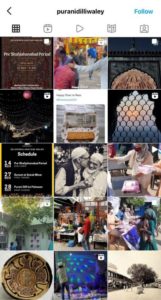
While such beautiful and real accounts find their place on Instagram, there are several pages that just seem to be dealing with aesthetics and don’t focus on giving anything of substance at all. Umair Shah, also known as @sikkawala on Instagram has something to say about this. “Although there are a lot of pages on social media presenting old Delhi in a very flowery manner, they ignore the fact that the area has been ghettoized. One must not romanticise a place without knowing the ground realities. Old Delhi is marginalised and ignored by the government. We look with awe at the art and architecture but the people there need food.” Umair’s work focuses on the monuments and art of places that you will not find on Google. He travels extensively and tells stories, apart from being a trained numismatist and fashion consultant.
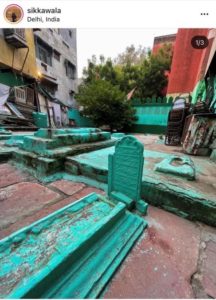
Apart from preservation of history, storytelling, reformation and archival; is there another purpose for the chronicling that happens on social media? Anas Khan, a freelance content writer and founder of the page @unzip_delhi gives us one more. “I want to use technology to bring back the lost culture, the ‘tehzeeb’ of Delhi,” he says. He also gives us another perspective regarding the question of romanticisation: “It is unfair to assume that the focus is only on aesthetics. There are several monuments and stunning structures around the city, so it is obvious that that is how they will be covered; that is, in a manner that brings to focus its beauty.”
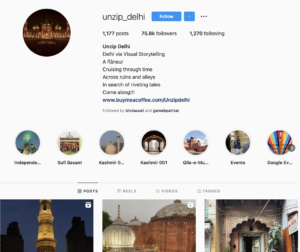
Delhi, with all its good and bad, will continue to be the muse of many artists. While earlier it was in the form of scriptures and faded photographs, now it is in the form of digital archives on Instagram. What remains common is the never-ending love for the city and the glorification of all that it holds. These pages will become a part of history, something that the future generation looks back at to know how the earlier times were. Blogs are serving as chronicles and all these pages will be testimonials to the fact that someone cared about this city deeply enough to make note of all that happens here. And maybe that is the most important reason why these pages exist.
(Cover: @dastaanedilli)

